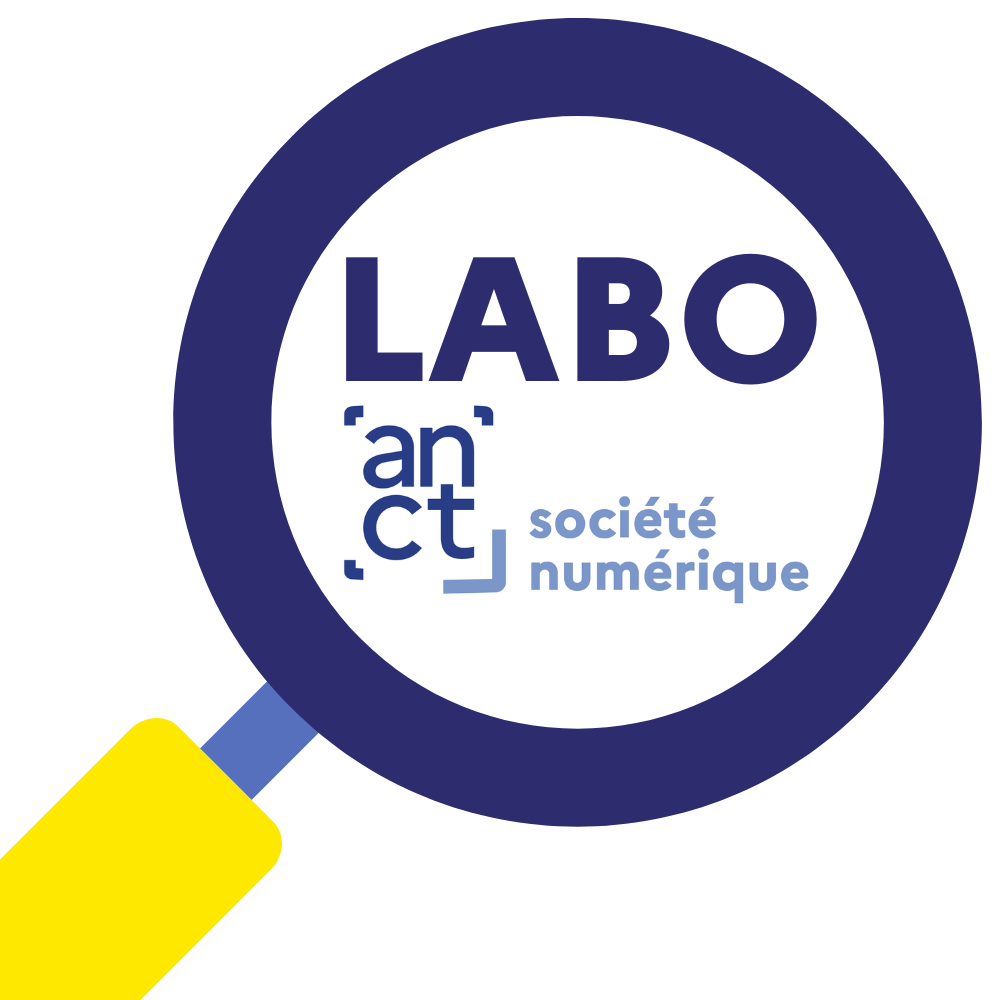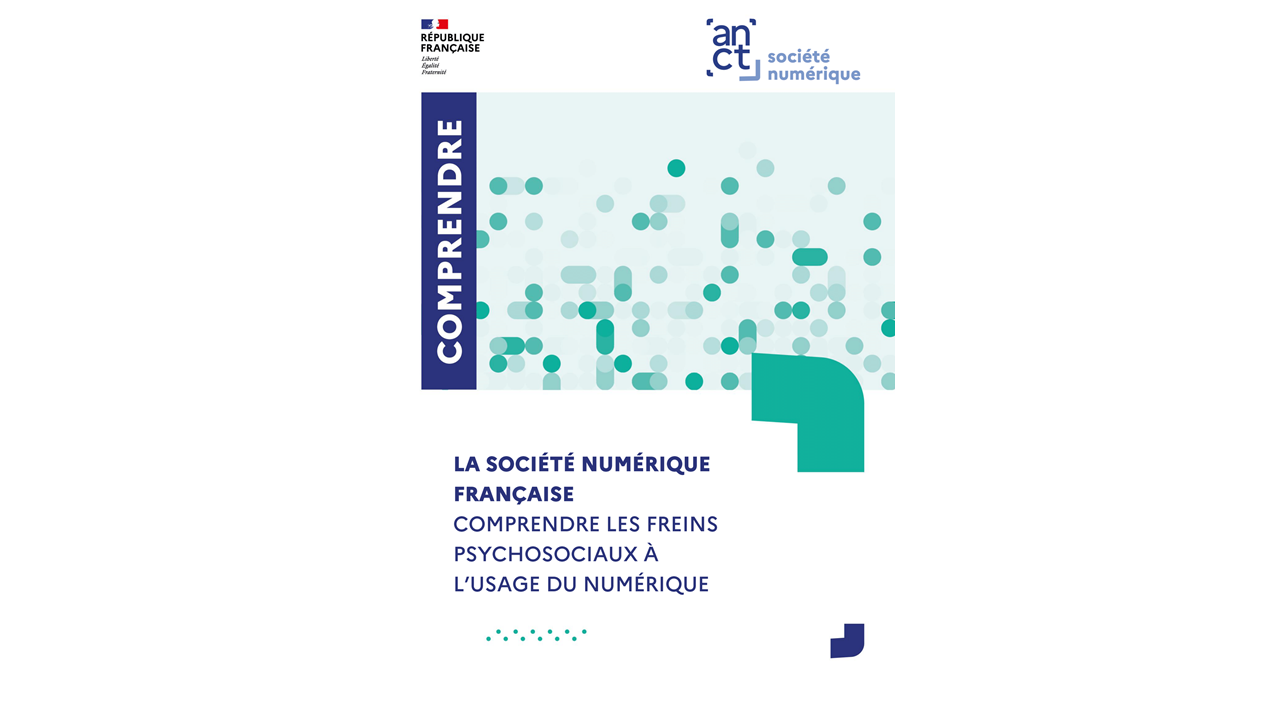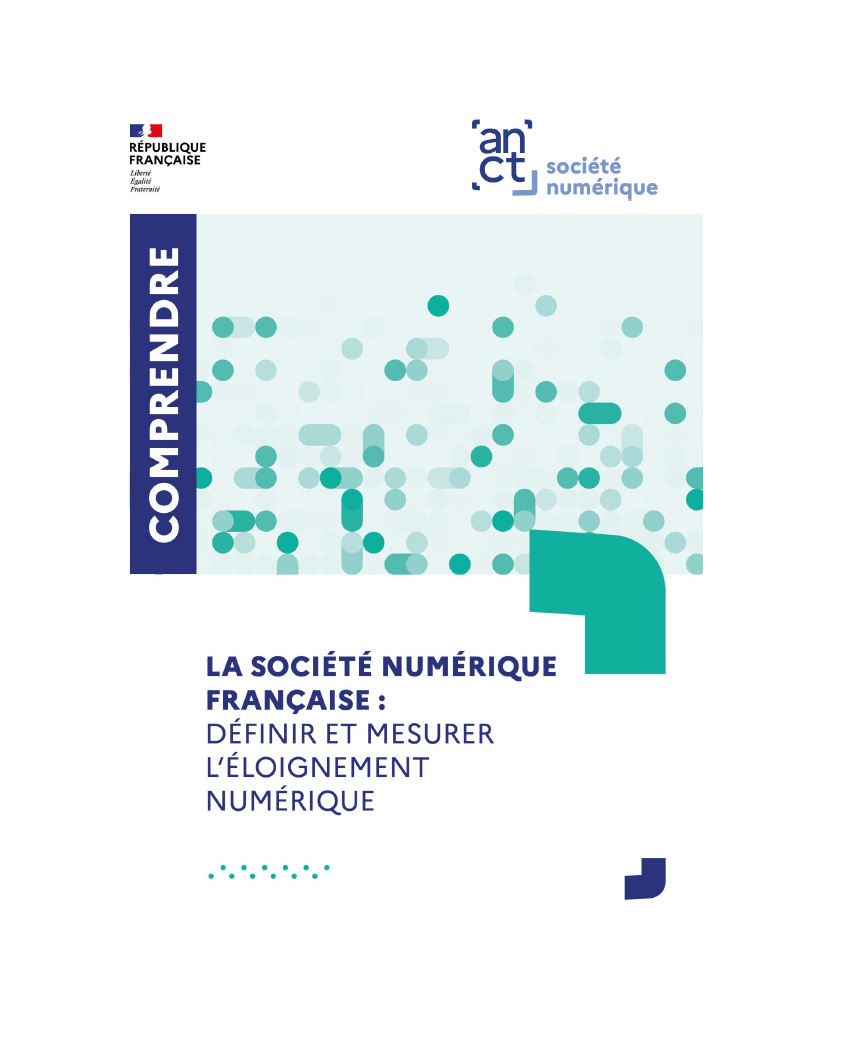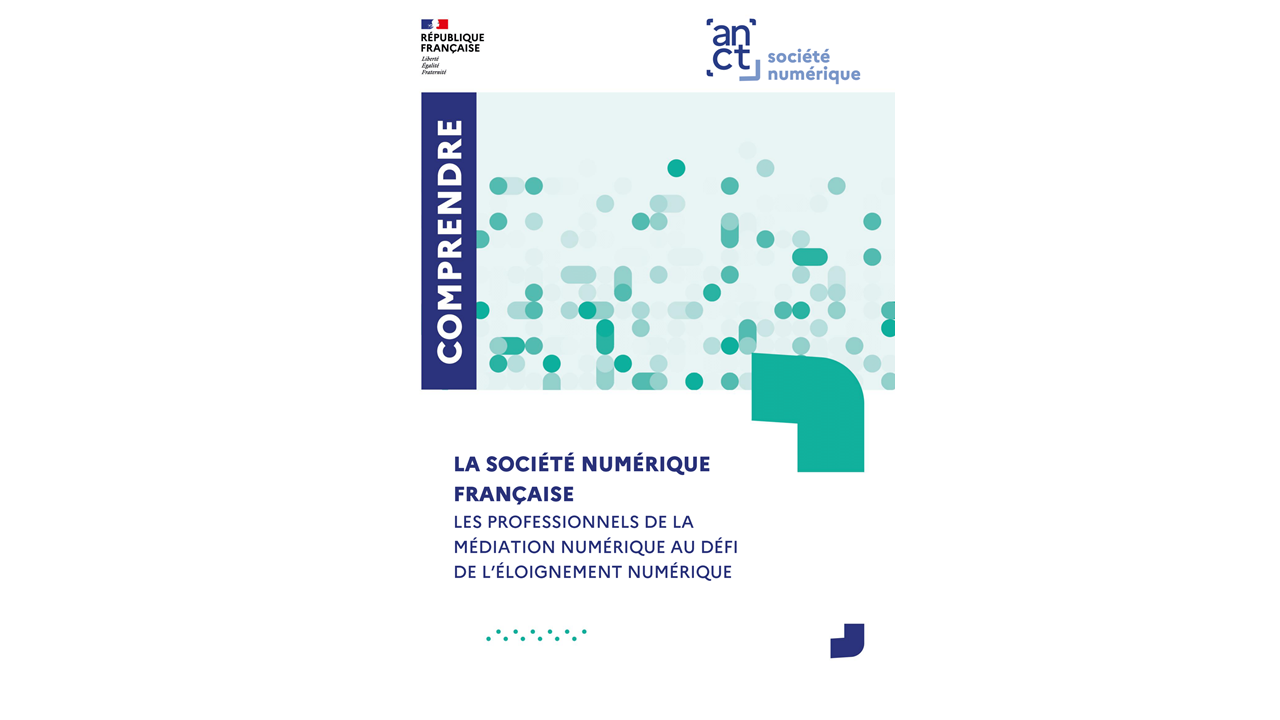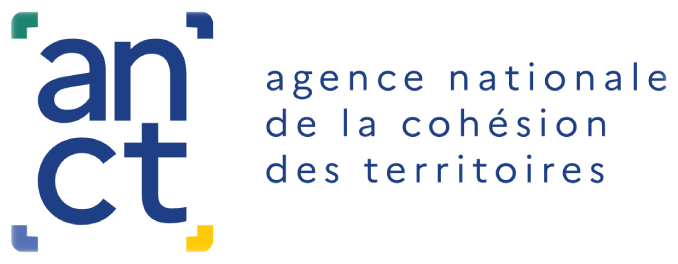Foreword
In 2021, the Digital Society Program of the French National Agency for Territorial Cohesion (ANCT), has launched a consultation for the production of a series of studies on the state of the art of the French digital society. It is within this framework that the Centre de recherche pour l'étude et l'observation des conditions de vie (CREDOC) and the Centre de recherche sur l'éducation, les apprentissages et la didactique (CREAD), associated with the GIS M@rsouin, are carrying out a diagnostic and analytical work that is giving rise to a series of thematic reports. The first edition, published in April 2023, focused on defining and measuring the phenomenon of digital distance. The second, published in March 2025, highlighted the actions of professionals in the digital mediation sector, showing the extent to which these cover all areas of people's daily lives, and must therefore be seen as complementary to the actions of other professionals in the social, socio-cultural and administrative sectors. The third and final edition of this series of studies aims to provide keys to understanding the presence of psychosocial barriers to digital use in the population, while suggesting ways of reducing them, far from any form of injunction. By mobilizing the most recent scientific literature and quantitative studies on the subject, this study plunges us into the social and cultural dynamics underlying the appropriation of digital technologies. The present article provides a summary of this latest study.
To quote the study :
ANCT, CREDOC, Université Rennes 2 CREAD-M@rsouin, La société numérique française: comprendre les freins psychosociaux à l'usage du numérique, 2025.
Study documents
PDF document
PDF document
Psychosocial obstacles, factors in digital society inequalities
Despite the massive spread of digital equipment and the democratization of Internet access among the French population over the past twenty years, the great heterogeneity of usage raises questions. Why, all other things being equal, do some people appropriate certain technologies and develop certain types of usage, while others ignore or reject them? The proportion of people who are unconnected or distant from digital technologies is much higher among those from modest backgrounds with few qualifications, compared with those from more privileged and highly educated backgrounds. However, the massification of Internet access means that purely economic reasons can no longer be invoked (even if they may continue to play a role in some households).
In this context, and in line with the ambition formulated during the consultation work carried out by the Conseil National de la Refondation Numérique (CNR), it seems crucial to understand the nature of the "psychosocial brakes" on the appropriation of digital technologies. The term "psychosocial" refers to the effects of social and cognitive processes on the way individuals perceive, influence and interact. The idea of "psychosocialbarriers" relates more specifically to individual beliefs, values, attitudes or perceptions that hinder participation in learning activities.
In response to this challenge, the study entitled " The French digital society: understanding psychosocial barriers to digital use " provides keys to understanding the various forms of distance from digital technologies, and suggests ways of reducing psychosocial barriers to digital use. Drawing on scientific literature and quantitative studies, it explores the conditions under which individuals and groups of individuals appropriate technologies and construct their uses, highlighting the role played by social and life contexts. It also proposes a typology of postures held by French men and women with regard to digital technologies.
Overview of psychosocial barriers to digital use
In order to draw up an overview of psychosocial barriers to digital use, we need to consider that these are less a question of strictly technical or material difficulties than of the way in which individuals assess the risks or feel legitimate in investing in digital environments. In this sense, they represent a transversal dimension that can limit the digital inclusion of populations. Many obstacles are likely to be psychosocial in nature, because even tangible obstacles (a cost, a risk, a constraint) are experienced and internalized in social and symbolic contexts that amplify or attenuate their impact.
A review of the brakes declared by the population reveals this psychosocial dimension, which feeds into the three major families of observable brakes: protection, sociocultural and adhesion. Protection brakes concern 47% of the population, and are centered on the identification of tangible risks such as cybercrime, data theft or online harassment. They are based on beliefs that go beyond whether or not they have actually been harmed, and can contribute to strategies for avoiding or limiting digital uses (purchases, sharing personal content). Socio-cultural obstacles are present among 40% of the population, and are based directly on a psychosocial attitude: that of not having sufficient mastery of the tools, of making mistakes, or of feeling financially excluded. This representation of one's own digital skills and level of equipment reflects both personal experiences of failure and the perception of a social and financial gap, particularly in relation to a level of skills or equipment perceived as necessary for "standard" digital uses (meeting the dominant norm). Lastly, 20% of the population are reluctant to embrace digital technology, either because they voluntarily distance themselves from it or because they are uninterested in it. These factors are fully rooted in the psychosocial dimension, since they reflect values, preferences and attitudes.
Psychosocial obstacles: the dynamics of appropriation
The origin of the psychosocial nature of the observed barriers to digital use can only be understood by placing these uses within the dynamics of appropriation. The notion of appropriation helps us to understand the active role played by users in the social construction of technologies and uses: for a device to be used and socialized, it must fit into a given social and cultural context, allowing users to integrate it into their daily lives, while adapting it more or less creatively to their own needs and projects.
However, every socio-technical device has a "prescribed use", which refers to what its designers expect future users to do. Indeed, the designers of these devices have their own representations of the tastes and expectations of potential users, influenced by their own social and cultural positioning. In fact, in the design of these devices, designers often inscribe an idealized and stereotyped vision of the "average" user, at ease with the written word and capable of navigating complex interfaces. The real user, on the other hand, rarely adopts a passive attitude to prescriptions. All devices are in fact appropriated (or not appropriated) by users, who develop their own "arts of doing". In fact, usage is influenced both by the tool as conceived (interface design and technical choices) and by pre-existing social practices and representations.
The social and living contexts of different categories of the population directly influence their relationship with digital technology. In particular, they are guided by the social norms present in the groups to which they belong. The result is a socially differentiated appropriation of socio-technical devices, the relationship with the written word being a good example: e-mail is widely appropriated by executives where it is little used by modest backgrounds with few qualifications. However, some usage norms are more socially valued than others, and are even imposed in certain circumstances, as is the case for the use of e-mail in administrative correspondence.
Distancing oneself from the norms of use can fuel a phenomenon of "self-contempt" for those who experience it. Lack of interest in, or rejection of, digital technology is seen as a socially legitimate reason for not using the Internet.
What's more, in certain professions where the use of digital technologies is ubiquitous, as is the case for some executives, voluntary forms of distancing sometimes exist, aimed at "regaining control" of usage. These take the form of voluntary disconnections, often partial, for example outside working hours.
Typology of psychosocial attitudes to digital technology
These differentiated appropriation logics are embodied in a psychosocial typology of four major digital profiles. The Refractory (7% of the population) maintain an assumed distance from digital technology, consistent with their values and lifestyles, with no real frustration. On the other hand, Technophiles (37%) express a marked confidence, believing that digital technology facilitates their daily lives; they are socially close to designers (graduates). Between these two poles, two groups reflect the tensions inherent in psychosocial obstacles: the Obstructed (18%), hindered by a feeling of lack of skills, legitimacy or adequate equipment, yet adept at digital practices and generally viewing digital in a positive light; and the Worriers (37%), whose uses are permeated by the fear of losing control, particularly around personal data and new technologies, and have a more nuanced view of digital, mostly used for its practicality (online procedures, purchases) rather than for taste, as for their hobbies. These attitudes, far from being anecdotal, reflect the way in which social inequalities and usage norms influence the way people appropriate digital technology.
Distancing ourselves from dominant social norms of use
Against a backdrop of increasing digitization of everyday activities and processes in a society, the study " French digital society: understanding psychosocial barriers to digital use " highlights the central role played by social and living contexts in the varied relationships individuals have with digital technology. In some cases, distance from technology can be understood as distance from dominant social norms of use. These dominant norms can be influenced by the configuration of socio-technical devices, and the design and technical properties of these devices. The latter are always the result of choices made by design actors, as bearers of particular values and interests. In the same way, these dominant social norms of use tend to reflect the uses of those most at ease with technology, often the most affluent and educated, who then constitute the norm of the "standard user", invisibilizing other social groups. Yet digital technologies can only be truly appropriate if they can be integrated into users' daily lives. In this respect, the psychosocial typology of digital users produced as part of this report shows that a majority of the population is, to varying degrees, out of step with the social norms of use.
Acknowledging the diversity of social worlds as a lever for deploying empowering digital technology
Consequently, this same study encourages reflection on how to take into account the heterogeneity of the "social worlds" of individuals and groups of individuals when defining public policies for digital inclusion and deploying digital mediation activities. Greater consideration for the diversity of users appears to be a sine qua non sine qua non for the development of a digital world that empowers the greatest possible number of people, and is able to become part of the daily lives of citizens who so desire.
In this respect, while it seems legitimate in many contexts to measure a population's level of appropriation of digital technologies, the evaluation of "basic digital skills" cannot account for the heterogeneity of the " social worlds" of digital users. In fact, this approach leaves out the psychosocial relationship with the digital world, i.e., all the beliefs, perceptions and attitudes that underpin the process of appropriation of digital technologies by individuals. In fact, by limiting itself to a selection of skills linked to digital usage grids, it focuses on proximity to dominant social usage norms (such as e-mail), and less on the ability to seize digital tools in one's daily life according to one's needs. An alternative approach would be to examine the subjective relationship between individuals and digital technology, which is a decisive factor in the development of empowering digital uses.
Finally, while any injunction to use digital technology would appear to be incompatible with reducing psychosocial barriers to digital use, achieving this ambition would mainly involve rolling back the deployment of standardized digital technology, which produces exclusionary social norms of use, while offering empowering digital mediation adapted to the social and cultural "worlds" of citizens.

